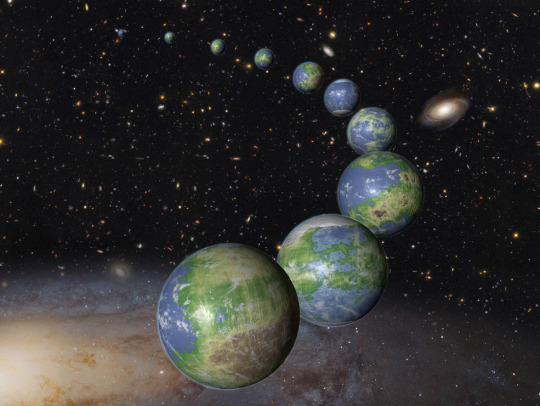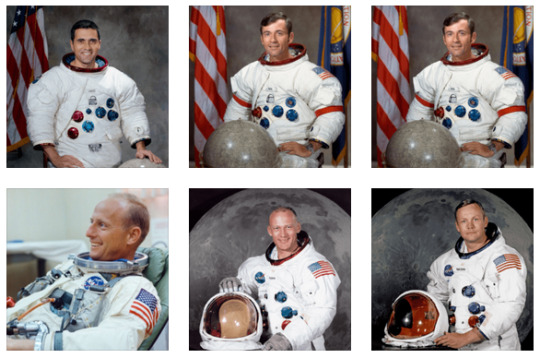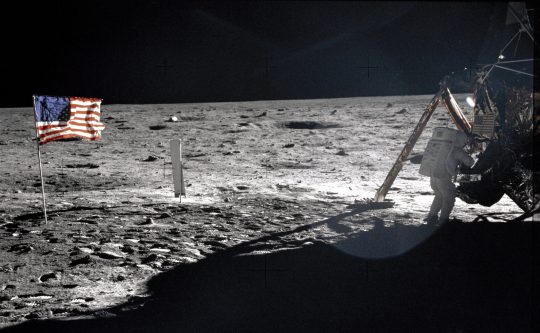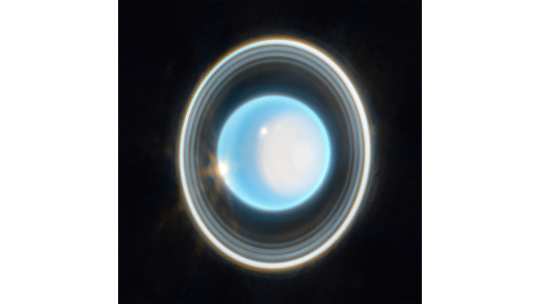#AstronomicalImaging
Explore tagged Tumblr posts
Text
The Quest for Habitable Worlds Beyond Our Solar System
Planets-Like-Earth
This is an artist’s impression of innumerable Earth-like planets that have yet to be born over the next trillion years in the evolving universe. Credits: NASA, ESA, and G. Bacon (STScI) The search for planets like Earth, often referred to as “exoplanets,” has ignited a profound sense of wonder and curiosity among astronomers and the general public alike. In recent years, incredible advancements…

View On WordPress
#Astrobiology#AstronomicalCatalogs#AstronomicalDatabases#AstronomicalImaging#AstronomicalInstruments#AstronomicalObservations#AstronomicalPhenomena#AstronomicalSpectroscopy#AstronomicalSurveys#AstronomicalUnits#BlackHoles#CelestialBodies#Constellations#CosmicMicrowaveBackground#Cosmology#DarkEnergy#DarkMatter#Exoplanets#Galaxies#LightYears#MeteorShowers#Nebulae#Planets#SolarSystem#SpaceExploration#Stars#StellarEvolution#Supernovae#Telescopes
0 notes
Text
Unistellar's New Smart Telescope Turns Anyone Into a Backyard Astrophotographer
Unistellar’s automated eQuinox 2 is the latest addition to the growing family of smart telescopes, making it possible for backyard astronomers to easily capture clear views of space, even in severely light-polluted conditions. The cost may pose a barrier, as does the absence of an eyepiece, but on balance this… Read more…

View On WordPress
#amateurastronomy#astronomicalimaging#astronomy#Astrophotography#europeansouthernobservatory#eyepiece#iPhone#Lenses#naturalsciences#nexstar#nikon#physicalsciences#technology2cinternet#telescope#telescopes#telescopetypes#unistellar
0 notes
Text
List of Apollo Moon Missions and Moonwalkers
Credit: NASA, ESA, CSA, and STScI List of Apollo Moon Missions and Moonwalkers: Apollo 11 (July 20, 1969): Neil Armstrong Edwin “Buzz” Aldrin Apollo 12 (November 14-24, 1969): Charles “Pete” Conrad Jr. Alan L. Bean Apollo 14 (February 5-9, 1971): Alan B. Shepard Jr. Edgar D. Mitchell Apollo 15 (July 26-August 7, 1971): David R. Scott James B. Irwin Apollo 16 (April 16-27,…

View On WordPress
#AstronomicalCatalogs#AstronomicalConstants.#AstronomicalDatabases#AstronomicalImaging#AstronomicalInstruments#AstronomicalObservations#AstronomicalPhenomena#AstronomicalSpectroscopy#AstronomicalSurveys#AstronomicalUnits#BlackHoles#CelestialBodies#CosmicMicrowaveBackground#DarkEnergy#DarkMatter#LightYears#MeteorShowers#SolarSystem#SpaceExploration#StellarEvolution#Astrobiology#Constellations#Cosmology#Exoplanets#Galaxies#moon landing#Nebulae#Planets#Stars#Supernovae
0 notes
Text
Debunking Moon Landing Conspiracy Theories: Separating Fact from Fiction
The notion that the moon landing was a hoax has persisted as a conspiracy theory for decades. However, it is essential to emphasize that these claims lack credible evidence and have been thoroughly debunked by experts and independent investigations. The overwhelming consensus among scientists, experts, and individuals involved in the missions is that the moon landings were indeed real. Credit:…

View On WordPress
#AstronomicalCatalogs#AstronomicalConstants.#AstronomicalDatabases#AstronomicalImaging#AstronomicalInstruments#AstronomicalObservations#AstronomicalPhenomena#AstronomicalSpectroscopy#AstronomicalSurveys#AstronomicalUnits#BlackHoles#CelestialBodies#CosmicMicrowaveBackground#DarkEnergy#DarkMatter#LightYears#MeteorShowers#SolarSystem#SpaceExploration#StellarEvolution#Astrobiology#Constellations#Cosmology#Exoplanets#Galaxies#moon landing#Nebulae#Planets#Stars#Supernovae
0 notes
Text
The Historic Moon Landing: A Giant Leap for Humankind
The moon landing stands as a monumental event, marking the historic occasion when humanity first set foot on the lunar surface. The most renowned moon landing occurred on July 20, 1969, as part of NASA’s Apollo 11 mission. American astronauts Neil Armstrong and Edwin “Buzz” Aldrin etched their names in history as the first and second individuals to walk on the moon, while astronaut Michael…

View On WordPress
#Astrobiology#AstronomicalCatalogs#AstronomicalConstants.#AstronomicalDatabases#AstronomicalImaging#AstronomicalInstruments#AstronomicalObservations#AstronomicalPhenomena#AstronomicalSpectroscopy#AstronomicalSurveys#AstronomicalUnits#BlackHoles#CelestialBodies#Constellations#CosmicMicrowaveBackground#Cosmology#DarkEnergy#DarkMatter#Exoplanets#Galaxies#LightYears#MeteorShowers#Nebulae#Planets#SolarSystem#SpaceExploration#Stars#StellarEvolution#Supernovae#Telescopes
0 notes
Text
Webb's Spectacular View: Zooming in on Uranus' Rings and Polar Cap
Prepare to be captivated by this stunning, zoomed-in image of Uranus, meticulously captured by Webb’s Near-Infrared Camera (NIRCam) on February 6, 2023. The image unveils a mesmerizing display of Uranus’ majestic rings. In this representative-color image, the planet shines with a striking blue hue, a result of combining data from two filters (F140M, F300M) at 1.4 and 3.0 microns. The blue and…

View On WordPress
#Astrobiology#AstronomicalCatalogs#AstronomicalDatabases#AstronomicalImaging#AstronomicalInstruments#AstronomicalObservations#AstronomicalPhenomena#AstronomicalSpectroscopy#AstronomicalSurveys#AstronomicalUnits#BlackHoles#CelestialBodies#Constellations#CosmicMicrowaveBackground#Cosmology#DarkEnergy#DarkMatter#Exoplanets#Galaxies#JamesWebbSpaceTelescope#JWST#LightYears#MeteorShowers#Nebulae#Planets#SolarSystem#SpaceExploration#Stars#StellarEvolution#Supernovae
0 notes
Text
Will Unistellar's Anti-Light Pollution Telescopes Let You See the Stars Even in City Lights?
Will Unistellar’s Anti-Light Pollution Telescopes Let You See the Stars Even in City Lights?
It’s sometimes easy to forget Las Vegas is built on a desert. It’s a long, flat plane that angles up toward the rim of multiple mountain ranges, like a high-rimmed plate. And as imagery from space shows, Las Vegas, sitting in the center of that plate, is an immense concentration of bright light surrounded by a stretch… Read more…

View On WordPress
#amateurastronomy#astronomicalimaging#astronomy#atacamadesert#europeansouthernobservatory#laurentmarfisi#lightpollution#naturalsciences#observationalastronomy#physicalsciences#spaceobservatories#technology2cinternet#telescope#unistellar
0 notes
Text
Remembering the Arecibo Observatory Dish, Two Years After Its Collapse
Remembering the Arecibo Observatory Dish, Two Years After Its Collapse
It happened in less than 10 seconds, two years ago today: The Arecibo Observatory’s 1,000-foot radio dish collapsed, eliminating one of the world’s most renowned sources of radio observations. Read more…

View On WordPress
#arecibo2cpuertorico#areciboobservatory#astronomicalimaging#astronomy#dompesce#five hundred meteraperturesphericaltelescope#nationalsciencefoundation#naturalsciences#parabolicantenna#physicalsciences#radiotelescope#radiotelescopes#scottransom#searchforextraterrestrialintelligence
0 notes
Text
Webb Telescope Drops Creepy Image of the Pillars of Creation
Webb Telescope Drops Creepy Image of the Pillars of Creation
A week and a half ago, NASA released a stunning image of the iconic Pillars of Creation taken by the Webb Space Telescope, a $10 billion state-of-the-art space observatory that launched last December. Read more…

View On WordPress
#adam#astronomicalimaging#astronomy#carinae28093sagittariusarm#eaglenebula#infraredtelescopes#jameswebbspacetelescope#michelangelo#naturalsciences#nircam#physicalsciences#pillarsofcreation#serpens#spaceobservatories#technology2cinternet#webb
0 notes
Text
Site of Collapsed Arecibo Telescope Will Become an Education Center
Site of Collapsed Arecibo Telescope Will Become an Education Center
The National Science Foundation announced this week that the site of the destroyed Arecibo Observatory radio telescope in Puerto Rico will become a STEM-focused educational center, and it’s seeking proposals to manage the new project. Read more…

View On WordPress
#arecibo2cpuertorico#areciboobservatory#astrobiology#astronomicalimaging#astronomy#nationalsciencefoundation#naturalsciences#physicalsciences#radioastronomy#radiotelescope#radiotelescopes#seanjones#searchforextraterrestrialintelligence#technology2cinternet#telescope
0 notes
Text
Webb Space Telescope Images Mars for the First Time
Webb Space Telescope Images Mars for the First Time
The Webb Space Telescope has amazed us with pictures of distant galaxies and glittering nebulae, but now it’s returned its first images of our solar system neighbor Mars. The newly released data comes from the telescope’s infrared instruments and provides scientists with information about Mars’ surface and atmospheric… Read more…

View On WordPress
#astronomicalimaging#astronomy#Environment#infrared#infraredtelescopes#jameswebbspacetelescope#Mars#observationalastronomy#opticalspectrometer#physicalsciences#spaceobservatories#technology2cinternet#telescope#telescopes#webb
0 notes
Text
Whoa, NASA Just Turned the First Webb Telescope Images Into Sounds
Whoa, NASA Just Turned the First Webb Telescope Images Into Sounds
On July 12, NASA released the Webb telescope’s first images. Now, the space agency has translated the data from those images into sounds, allowing us to hear the cosmic wonders the telescope saw. Read more…

View On WordPress
#astronomicalimaging#astronomy#carina#carinanebula#electromagneticradiation#infrared#infraredtelescopes#jameswebbspacetelescope#ngcobjects#physicalsciences#quyenhart#spaceobservatories#technology2cinternet#telescope#webb
0 notes
Text
Are the Colors in Webb Telescope Images 'Fake'?
Are the Colors in Webb Telescope Images ‘Fake’?
On July 12, the first full-color images from the Webb Space Telescope showed countless nebulae, galaxies, and a gassy exoplanet as they had never been seen before. But Webb only collects infrared and near-infrared light, which the human eye cannot see—so where are these gorgeous colors coming from? Read more…

View On WordPress
#alyssapagan#appliedsciences#astronomicalimaging#astronomy#goddardspaceflightcenter#hubblespacetelescope#infrared#infraredtelescopes#jameswebbspacetelescope#joedepasquale#opticalspectrometer#spacetelescopes#stephanquintet#technology2cinternet#telescope#telescopes#webb
0 notes